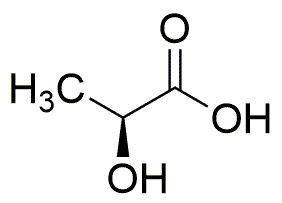L-(+)-Lactic acid is widely utilized in research focused on:
- Food Industry: It serves as a natural preservative and flavoring agent in various food products, enhancing taste while extending shelf life.
- Pharmaceuticals: This compound is used in the formulation of medications and intravenous solutions, aiding in pH regulation and acting as a buffering agent.
- Cosmetics: Lactic acid is a key ingredient in skincare products, known for its exfoliating properties that promote smoother skin and improve hydration.
- Biotechnology: It plays a crucial role in fermentation processes for producing biodegradable plastics and biofuels, contributing to sustainable practices.
- Sports Nutrition: Athletes utilize lactic acid supplements to enhance recovery and reduce muscle soreness after intense workouts, supporting overall performance.
General Information
Properties
Safety and Regulations
Applications
L-(+)-Lactic acid is widely utilized in research focused on:
- Food Industry: It serves as a natural preservative and flavoring agent in various food products, enhancing taste while extending shelf life.
- Pharmaceuticals: This compound is used in the formulation of medications and intravenous solutions, aiding in pH regulation and acting as a buffering agent.
- Cosmetics: Lactic acid is a key ingredient in skincare products, known for its exfoliating properties that promote smoother skin and improve hydration.
- Biotechnology: It plays a crucial role in fermentation processes for producing biodegradable plastics and biofuels, contributing to sustainable practices.
- Sports Nutrition: Athletes utilize lactic acid supplements to enhance recovery and reduce muscle soreness after intense workouts, supporting overall performance.
Documents
Safety Data Sheets (SDS)
The SDS provides comprehensive safety information on handling, storage, and disposal of the product.
Product Specification (PS)
The PS provides a comprehensive breakdown of the product’s properties, including chemical composition, physical state, purity, and storage requirements. It also details acceptable quality ranges and the product's intended applications.
Certificates of Analysis (COA)
Search for Certificates of Analysis (COA) by entering the products Lot Number. Lot and Batch Numbers can be found on a product’s label following the words ‘Lot’ or ‘Batch’.
*Catalog Number
*Lot Number
Certificates Of Origin (COO)
This COO confirms the country where the product was manufactured, and also details the materials and components used in it and whether it is derived from natural, synthetic, or other specific sources. This certificate may be required for customs, trade, and regulatory compliance.
*Catalog Number
*Lot Number
Safety Data Sheets (SDS)
The SDS provides comprehensive safety information on handling, storage, and disposal of the product.
DownloadProduct Specification (PS)
The PS provides a comprehensive breakdown of the product’s properties, including chemical composition, physical state, purity, and storage requirements. It also details acceptable quality ranges and the product's intended applications.
DownloadCertificates of Analysis (COA)
Search for Certificates of Analysis (COA) by entering the products Lot Number. Lot and Batch Numbers can be found on a product’s label following the words ‘Lot’ or ‘Batch’.
*Catalog Number
*Lot Number
Certificates Of Origin (COO)
This COO confirms the country where the product was manufactured, and also details the materials and components used in it and whether it is derived from natural, synthetic, or other specific sources. This certificate may be required for customs, trade, and regulatory compliance.


